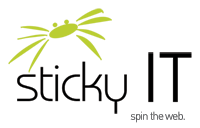Top 4 Strategic Interview Styles
Interviews are the most important piece of the hiring process. Poorly executed interviews can drive away good candidates and make terrible candidates look like stars. There are four key interview styles that can be leveraged to obtain valid answers and insights about your potential candidates. Learn these techniques and use them to reveal the true strengths, weaknesses and personalities of your candidates.
1. Relaxed Interviewing
To use this technique, you need to create a very relaxed environment for the interview. Greet the candidate, ask if you can get them a drink and have a casual conversation before actually starting the interview. Be careful to not sit across a desk or table. Sitting on the same side, or using a round table works well. When sitting, position yourself in an obviously relaxed position, but be careful to not cross your arms. Room lighting can also have an influence. Natural or incandescent light is the best, whereas florescent lights can often make for a more stressful environment. You may also consider doing the interview outside if it is a nice day. When you begin to ask questions, do so in a calm voice. Phrase your questions to not sound harsh. This comfortable environment and style of asking questions should help the candidate to feel more comfortable, often resulting in better dialogue.
2. Intimidating Interviewing
With this technique you intentionally create an intimidating atmosphere. Position yourself at the opposite end of a large table, or across a large desk. Bright florescent lighting is ideal. Raise your chair higher than the candidate's chair so you appear rigid and in a more powerful stance. The goal is to create the image of an "all-business" interviewer who does not want to engage in small talk. It is best to start with extremely difficult and uncomfortable questions. Maintain eye contact while showing little expression on your face as the candidate answers your questions. Challenge the answers provided when possible to see if your candidate can handle on-the-spot pressure. Bold interviewers may even ask a candidate to sit up straight or to speak using more formal language during the interview. This style is an effective tool to evaluate a candidate's ability to handles stress, overcome hostile communication, and work under pressure.
3. "Friend" Interviewing
A third option is to have friendly, current employees interview the candidate. The employees should approach the candidate as a friend and future co-worker, trying to bring out the true nature of the candidate. Some candidates are very effective at putting on the "interview face" and may seem like the perfect fit when interviewed by a manager or supervisor. However, an interview with potential co-workers could bring out his or her true personality. It is important to make this interview feel like a friendly discussion between future co-workers and not an actual interview. If done properly, this tactic should get the candidate to relax enough to reveal character traits that may otherwise be unseen.
4. Panel Interviewing
When implementing this technique, you create a team of several members, each with a different interviewing style. The team then interviews the candidate as a group, freely asking questions from a pre-planned list. Panel interviewing method forces the candidate to react to a variety of questions and personalities, and will show if the candidate can handle a situation in which diversity is a factor. Be sure to pre-define a leader when doing panel interviews. If the candidate is obviously not the right fit, the leader should cut the interview short to save the team's time. After the interview, team members will have differing opinions about the candidate. Engage in open debate about the pros and cons of each candidate shortly after the interview. Consensus may not be reached, but the open dialogue will help identify the best candidates. It is usually valuable for the leader do one-on-one interviews with the top few candidates before making a final decision.
To ensure a properly executed interview, before initiating the interview process, meet and define the questions and styles to be used by all interviewers. Distribute candidate resumes or applications to all interviewers and discuss the desired characteristics of the ideal candidate. Be strategic with both the questions and styles used by each person conducting an interview. Arrange your interview room or rooms to augment the success of your interview style. And, plan your list of questions carefully to make sure that you are not crossing any legal boundaries. With a little preplanning, you can successfully manage the entire interview process, and hopefully gain a new employee that is a perfect match for your organization.
This article is courtesy of Careerbuilder.com
Back to employer resources & tools
